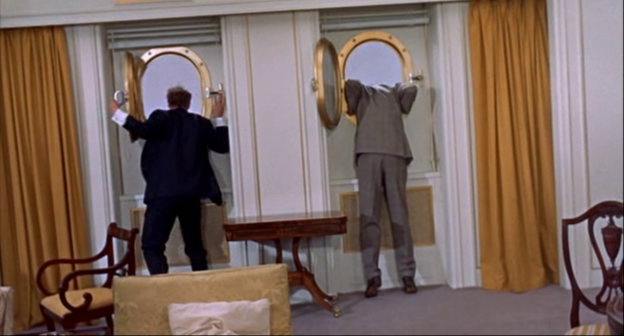
Everybody gets seasick in this next part of A COUNTESS FROM HONG KONG. No evidence that Chaplin has paid to put his set on rockers, thus inviting comparison with the climax of THE GOLD RUSH or with the similar scenes in THE IMMIGRANT. He’s just having the camera rock to and from — the most extensive use of camera movement in a Chaplin film.
A reasonably well-choreographed bit where an ashtray with fuming cigar is pushed around, nauseating Sid, then Marlon, then Sophia. If the three actors were comedically in tune with each other, their roles, and the material, this might have been really good. Chaplin never had to worry much about chemistry, since he was always the lead, and everybody danced to his tune.
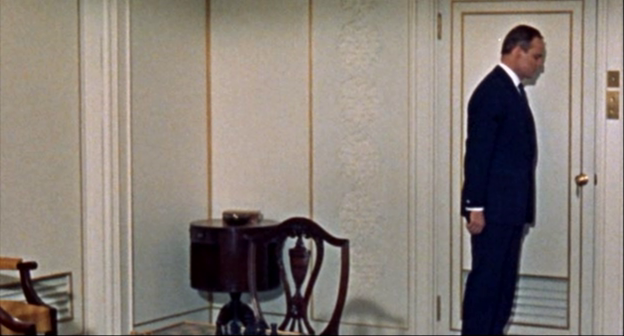
Weird grainy bit where the film has obviously been blown up, to reframe and hide a defect, or what? It certainly results in an odd composition.
It comes right before Chaplin’s cameo, where he says, of the stormy seas, “Just a little sloppy, nothing serious,” which they should have used as the movie’s slogan. Comparing the cameo with the matching one in A WOMAN OF PARIS, we can note that they both snap the film into sharper focus, but also make us want to abandon the main characters’ story and follow this little fellow. But Chaplin’s scene here is just a LINE — nothing visual. Obviously you could top the line by having Chaplin stagger or look bilious, but that doesn’t seem to have occurred to anyone.
Film is, in most cases, a young man’s game. There’s a terrible danger in thinking you’ve figured this lark out, that your efforts are following the established rules, that they are good enough. The doubt felt by beginners is nearly always preferable to the comfortable certainty of the veteran — except with those rare veterans who have things figured out CORRECTLY (for them), or who have retained both the youthful terror and the what-the-hell bravado.
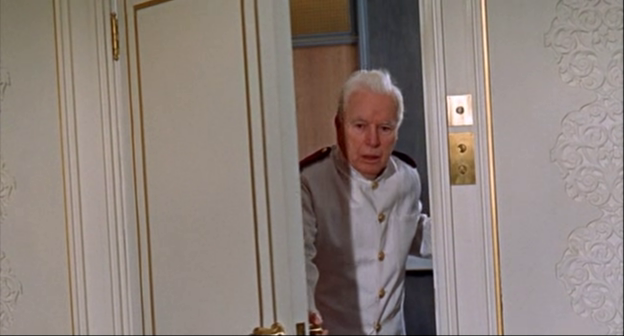
Ahah! Chaplin comes back, and now he’s feeling the mal-de-mer himself. So I was wrong, he does top the topper. And Brando was apparently moved and amused by his performance, so that his own behaviour improved and he started speaking to his director again.
For some reason we now learn that Ogden/Marlon has recurring bouts of malaria, and Sophia nurses him through this sickness — but we never see any of this. Odd, since this seems to have changed Ogden’s attitude to Natasha/Sophia. In other words, a critical character scene is missing. On the other hand, it doesn’t sound like a GOOD scene.
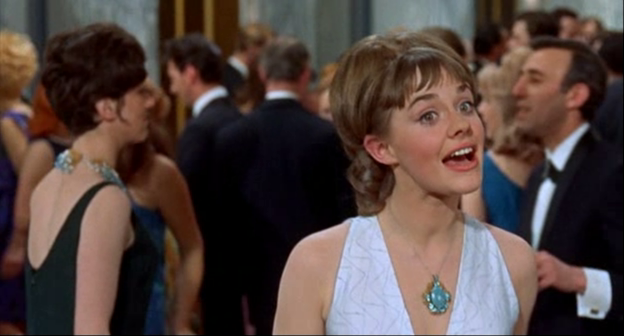

Suddenly Angela Scoular tears into the film, the only actor to date who seemingly knows she’s in a comedy. Scoular, an inventive, sexy and startling presence, shakes things up a bit. The movies never quite knew what to do with her, though her bit in ON HER MAJESTY’S SECRET SERVICE is impressive. If only all Bond girls were like that. She’s decided, for the sake of something to do, to make her meaningless character here insanely posh, and this is fun. Did Chaplin not notice that she was in a different (but better!) register from everyone else around her? Maybe he did, because he cuts away from her talking to show Loren playing solitaire, and then cuts back — how much Scoular gold is on the cutting room floor?
Later, he cuts to a random trumpeter. Anything to escape this damned ENTERTAINMENT.

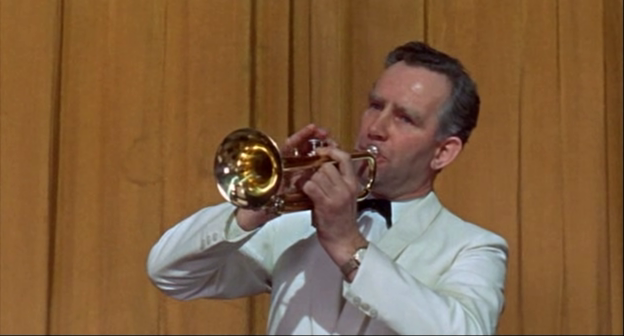
What’s funny about this character, in the way AS has decided to play her, is that she talks only for her own amusement and wonderment, and enjoys all her own amazing thoughts, with no interest whatever in who she’s speaking to. One would hope Brando, usually terrific at reacting in-the-moment to other players and situations, would come to life in response, but his work here continues to be flat and grudging, although there are hints that he’s realising he’s dancing in the arms of a madwoman…
I’m reminded of George Miller’s words to his cameraman on MAD MAX; FURY ROAD (it’s on my mind as I’m very much looking forward to seeing FURIOSA on Friday) — “Forget everything you know about widescreen cinematography. Always put the subject in the exact centre of the frame, because at the speed I will be cutting, the audience won’t have time to search the screen for the subject…” (paraphrasing)

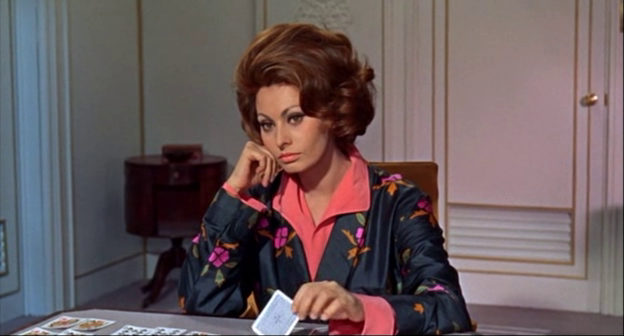
Chaplin doesn’t need to forget about widescreen framing because he’s never learned it, so he puts his characters in the exact centre for their medium shots, making this a super-easy film for the pan-and-scanners to crop for TV. They wouldn’t need to touch a switch once. It accounts for some of the weird deadness — it might have been shot by Lars Von Trier’s robot cameraman.
Sidney Chaplin has a lot of screen time but a thankless, purposeless role. As Ogden’s friend and fixer, he might have productively been used as antagonist to Natasha, who after all could derail his friend/boss’s career. Or he could fall for her himself. Instead we see him trying to play Cupid, and express Ogden’s romantic feelings for Natasha, which seems a peculiarly useless way of filming romance. I guess if it were done brilliantly, it could be brilliant… Lubitschian indirection or something. Trouble is, it’s not that Ogden is unaware of his own emotions (which can be effective in a love story) — he’s just kind of indifferent to them.
Oh, adding to the deadness — Chaplin tends to cut between actors on their lines, as if this were a Jack Webb Dragnet-style procedural. Very little in the way of reaction shots or thinking. Again, a roboticism invades the process.
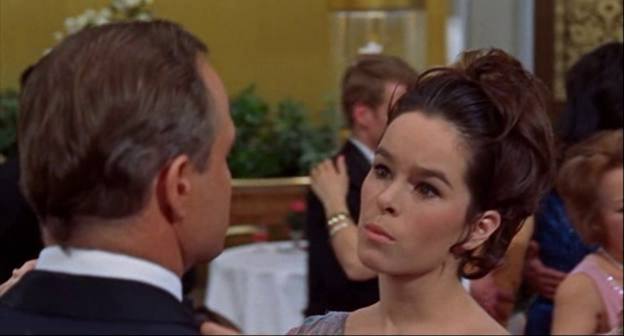
“I’ve been wondering about the immortality of the soul,” says Geraldine Chaplin, suddenly appearing for no reason as Marlon’s new dance partner. What is it with these spacey narcissistic women all at once running amuck in this ballroom? They’re very welcome, but they also make us realise what we’ve been missing during the first my God HOUR of this thing.
I guess their function is to make Ogden realise what he’s been missing — a woman who eats food and takes an interest in corporeal matters and understands what a conversation is. If the stars were able to suggest any real connection this would work better. And sadly Chaplin doesn’t think of making Sophia’s male dance partner’s equally bananas. This would be a perfect venue for Skye Dumont, the suave Hungarian loverboy from EYES WIDE SHUT.
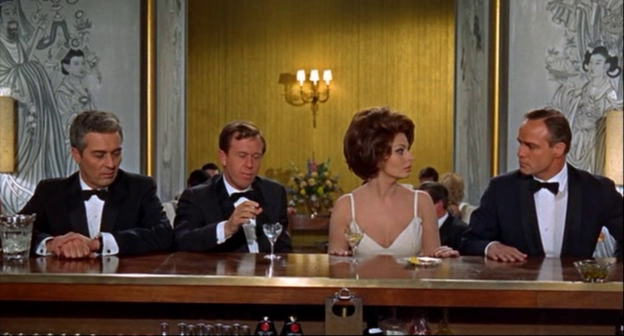
Occasionally the film offers up a composition that feels like a comic situation. Loren eventually does dance with a character, a pushy fellow (impossible to work out who the actor is) who knows her as a dance hall hostess or bar girl. Everybody ends up at the bar. I wish the shot was held longer. It LOOKS like a fun scene from a sophisticated comedy, doesn’t it? God knows it isn’t.
Producer Jerry Epstein played his own cameo as a barman, but, though he enjoyed performing, didn’t like doing it on camera, so his stuff seems to have been cut.
This corridor does NOT look like a fun scene from a sophisticated comedy, though, does it? But it’s nice.
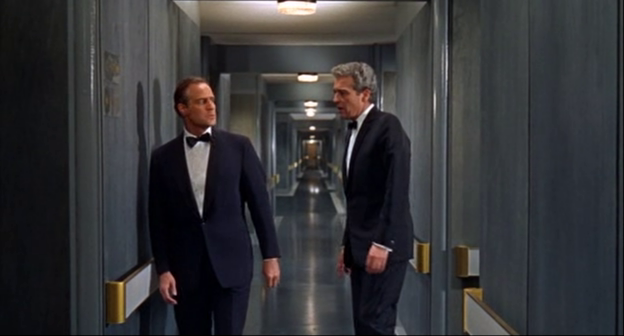
If you want to resurrect the ghost of screwball — which nobody has managed to do, alas — I think lots of white or cream would be useful. But then, there’s lots of cream in Ogden’s suite, and whenever I’m in there I get cabin fever. The gold trim doesn’t help, nor the hotel furniture and that chair the colour of zombie mustard.
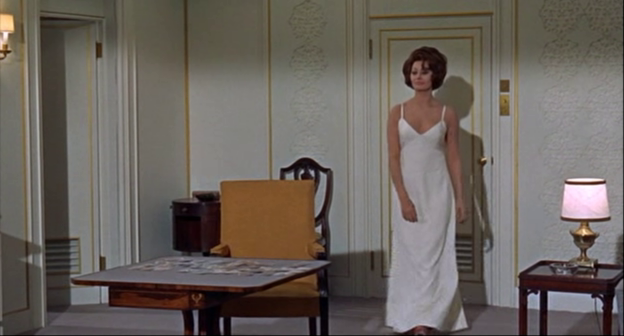
At the exact one hour mark, we get the first clinch, which seems like a good time to say
TO BE CONTINUED














